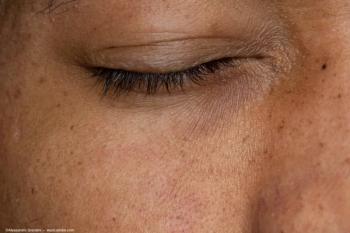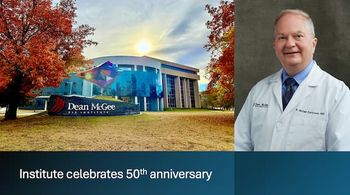
AMD, AI, and the future of eye imaging: Inside the 2025 International SPECTRALIS Symposium
Key Takeaways
- The ISS will cover advanced topics like oculomics, high-resolution OCT, and AI in ophthalmology, with sessions chaired by leading experts.
- Keynote speakers from NASA will discuss spaceflight-associated neuro-ocular syndrome (SANS) and other space-related research.
With 35+ lectures, a NASA keynote, and a river cruise through historic Heidelberg, this year’s symposium blends science and scenery
The 21st International SPECTRALIS Symposium (ISS), hosted by Heidelberg Engineering, will take place from June 13–14 in its namesake city, Heidelberg, Germany—marking the first time the event will take place in the newly opened Heidelberg Congress Center.
At the close of the first day’s scientific sessions, participants will have the opportunity to join a river cruise along the Neckar, offering picturesque views of historic Heidelberg.1 Guests can choose between the Queen Silvia, which features a seated dinner cruise, or a second vessel providing food, drinks, and live music.
Both days of the meeting will feature welcome messages from course director Frank Holz, MD, FEBO, FARVO. Holz is professor and chair of the Department of Ophthalmology at University of Bonn, Germany. During the ISS, he will serve as co-chair for two sessions, and will present his own lecture, sharing results from the MACUSTAR study demonstrating imaging-based progression markers in intermediate AMD.
Below, find the schedule of topics, including program chairs, for the ISS.2 For more information about the ISS, including information on digital poster presentations, tours of the SkyLabs tower and registration, access the
Friday
Welcome address from course director Professor Frank G. Holz
9:45
Oculomics
Chaired by SriniVas R. Sadda, MD, FARVO, and Giovanni Staurenghi, MD, FARVO, FEBO
10:00 to 11:15
Lecture topics will include mechanistic and biomarker discovery, unlocking systemic insights with multimodal retinal imaging in the NICOLA study, approaching neurodegeneration with a focus on corneal imaging, and more.
High-resolution OCT
Chaired by Balwantray Chauhan, PhD, and Leopold Schmetterer, MSc, PhD
11:45 to 13:00
Lectures will address many challenges and opportunities in optical coherence tomography (OCT), including high-res OCT of atrophic and precursor lesions in AMD, unveiling new insights in diabetic maculopathy with high-resolution OCT, first reactions to a new high-res imaging platform.
New Technology
Chaired by Prof Holz and Adnan Tufail, MBBS, MD, FRCOphth
14:30 to 15:45
Topics in this session include holographic OCT for retinal function, in vivo functional imaging of singular retinal ganglion cells with two-photon imaging, use of fluorescence lifetime imaging ophthalmoscopy (FLIO) to study silent disease progression in Alzheimer, Parkinson and MS and other topics.
AMD and GA
Chaired by Karl Csaky, MD, PhD, and Robert P. Finger, MD, PhD
16:15 to 17:30
Multiple presentations using the MACUSTAR data to better understand retinal function and structure, using OCT-determined anatomical features as clinical trial endpoints, and more
Keynote: A journey into space
From 17:45 to 18:30, two team members from the National Aeronautics and Space Administration (NASA) will deliver the keynote address, “A journey into space: Völlig losgelöst!”
Warren “Woody” Hoburg reported for duty as part of the NASA astronaut class of 2017. He holds a bachelor’s degree in aeronautics and astronautics from the Massachusetts Institute of Technology (MIT) and a doctorate in electrical engineering and computer science from the University of California, Berkeley. At the time of his selection for the astronaut program, he was an assistant professor at MIT. Astronaut Hoburg launched to the International Space Station as Pilot of NASA’s SpaceX Crew-6 mission in March 2, 2023 and has logged a total of 186 days in space on his first flight.3
Tyson J. Brunstetter, MBA, OD, PhD, FAAO, FAsMA, is a US Navy aerospace optometrist at the NASA Johnson Space Center in Houston, Texas. He earned his OD, MS and PhD from the Ohio State University.4 He the clinical lead for NASA’s research into spaceflight-associated neuro-ocular syndrome (SANS), a condition which is common among astronauts, especially during long-duration missions.
Follow along with all of our ISS coverage
Saturday
Welcome note from course director Professor Frank G. Holz
9:00
Artificial intelligence
Chaired by Roberto Gallego Pinazo, MD, PhD, and Seung-Young Yu, MD, PhD
9:30 to 10:30
Presentations in the artificial intelligence (AI) session will address use of AI in FLIO (including findings from the AI-READI project), AI-based evaluation of dry AMD biomarkers and fluid monitoring in nAMD and GA.
Retina
Chaired by Anat Loewenstein, MD, and Ursula Schmidt-Erfurth, MD
11:00 to 12:30
Topics will include pearls for avoiding misdiagnosis when encountering hyperreflective vitreous opacities in children, OCT and OCT-A in patients with sickle cell retinopathy, OCT-based outcome measures in pediatric gene therapy, and more.
Distributed care
Chaired by Prof Holz and James Talks, MA, MB Bchir, MRCP, FRCOphth
14:00 to 15:30
Topics in the final session include remote patient monitoring, the continued relevance of multimodal imaging, extreme telemedicine during long-duration space travel and closing the “gaps” between hospitals and communities with retinal imaging.
References
1. International SPECTRALIS Symposium June 13-14 in Heidelberg. Heidelberg Engineering Academy. Accessed June 9, 2025. https://academy.heidelbergengineering.com/course/view.php?id=1246
2. International SPECTRALIS Symposium and Beyond: Our Best Program. Heidelberg Engineering Academy. Accessed June 9, 2025. https://www.academy.heidelbergengineering.com/hedata/e-learning/Totara/Dateien/ScientificProgram_ISS2025_Heidelberg.pdf
3. Warren Hoburg, NASA Astronaut. NASA. Accessed June 9, 2025. https://www.nasa.gov/people/warren-hoburg/
4. Bio: Tyson J. Brunstetter. United Mitochondrial Diseased Mar Foundation. Published March 2022. Accessed June 9, 2025. https://www.umdf.org/wp-content/uploads/2022/03/2022MitoMedBrunstetterBio.pdf
Newsletter
Don’t miss out—get Ophthalmology Times updates on the latest clinical advancements and expert interviews, straight to your inbox.


















































.png)


